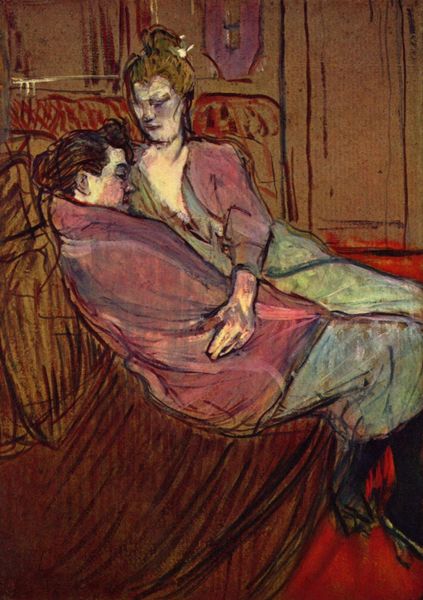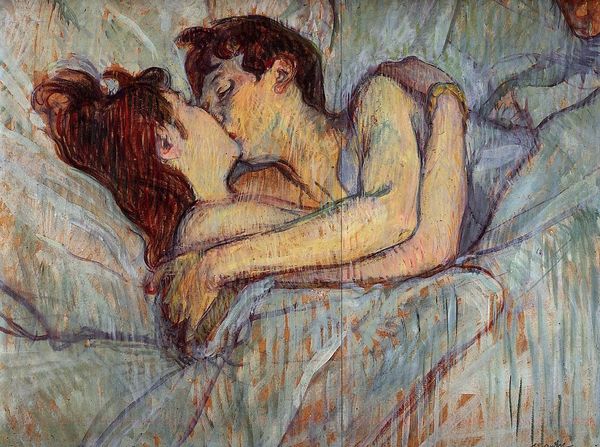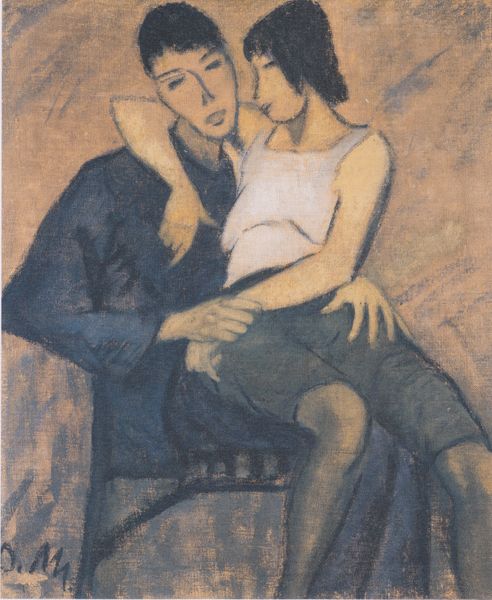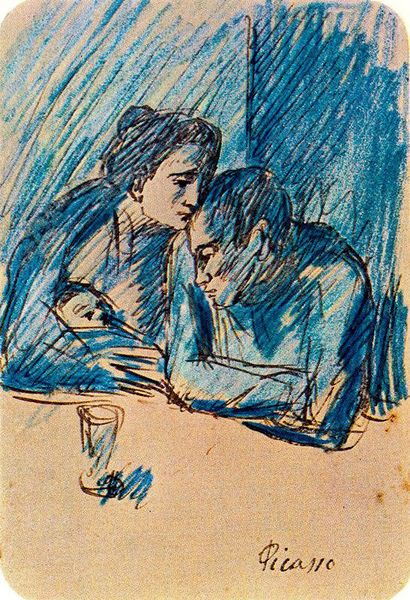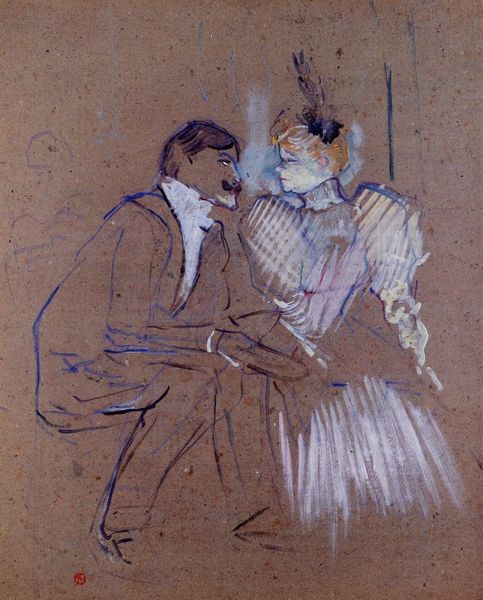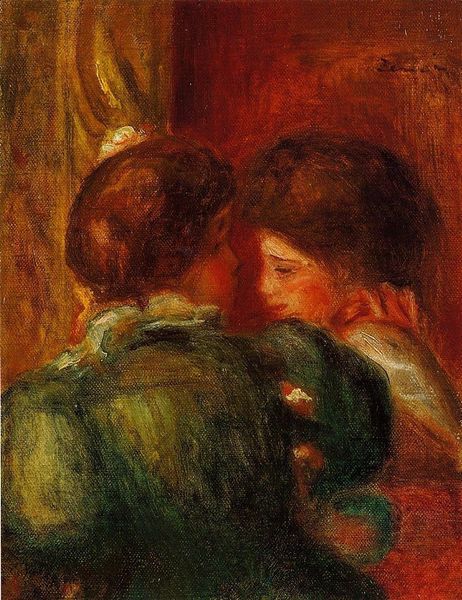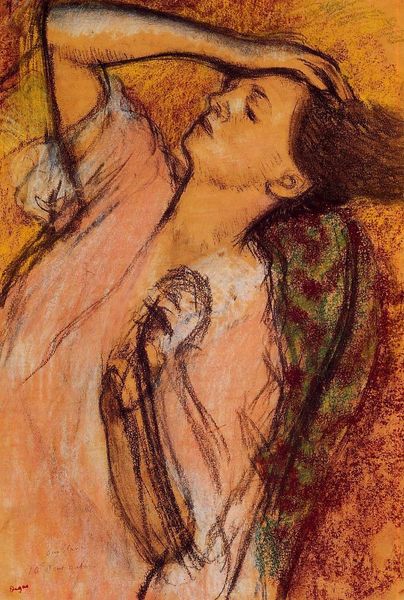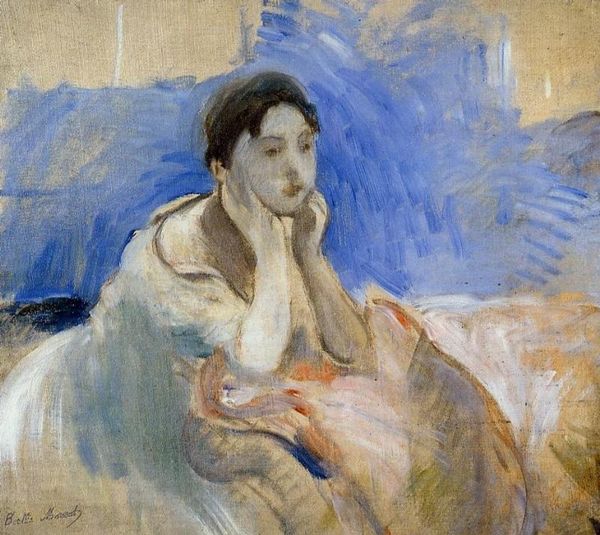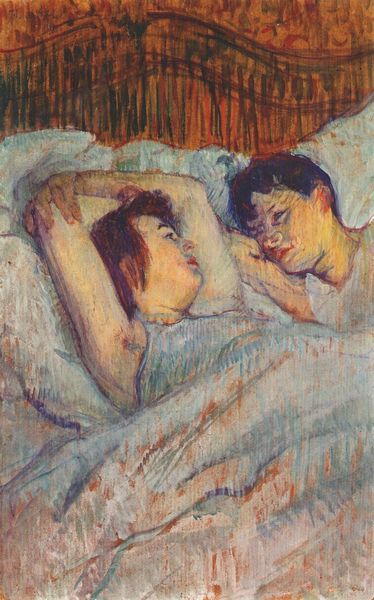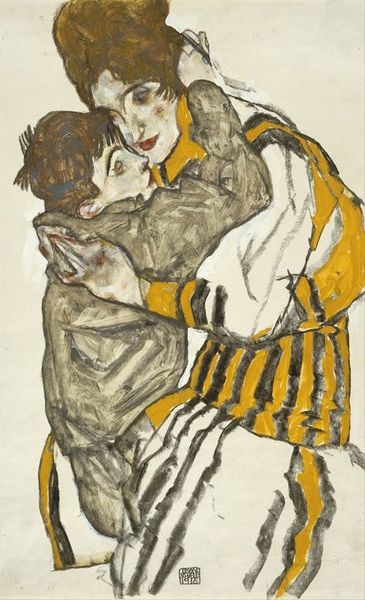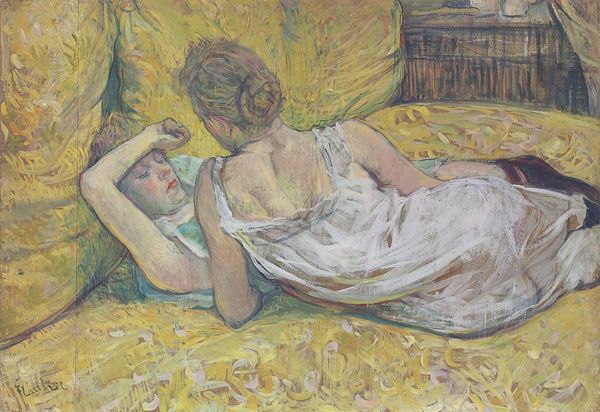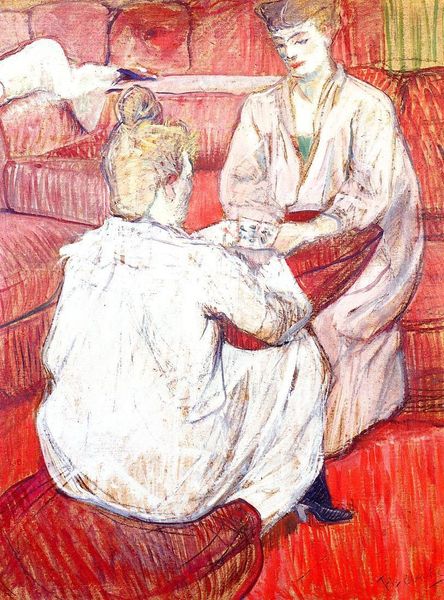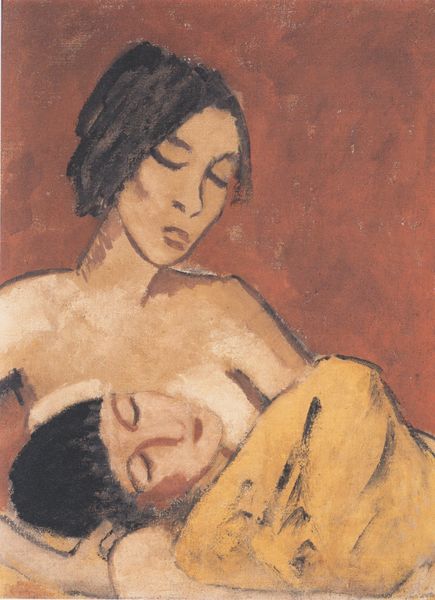
Copyright: Public domain
Curator: Here we have Henri de Toulouse-Lautrec’s painting "The Two Girlfriends," dating from 1894. It’s currently held at the Musee Toulouse-Lautrec in Albi, France. The artist worked with oil paint in this exploration of intimism, portraying a seemingly private moment. Editor: It feels so raw. There’s an immediate sense of the informal here—the sketched lines, the muted colors… I am drawn to the apparent tenderness between the two figures, a kind of shared intimacy that feels defiant for its time. Curator: Absolutely. The loose brushstrokes are characteristic of the Post-Impressionist movement and the sense of immediacy creates an incredibly potent depiction. But for me, beyond that, it feels like there’s an echo of ancient Roman sarcophagi imagery. See the way the figures are arranged in almost perfect symmetry within the frame. Editor: I see what you mean. Their arrangement feels staged, while at the same time, the women look so real and the work feels documentary. Perhaps Toulouse-Lautrec, through their closeness, challenges the prevalent norms around female relationships, offering a glimpse into lives often obscured or outright denied. Curator: Consider too, that in those days artists typically sanitized depictions of human emotion, whereas Lautrec seemed dedicated to capturing raw feeling in a way few were prepared to. Look at how their faces touch—the one almost burrowing into the shoulder of the other, a common motif of maternal nurturing but made modern and complex with the relationship between the two adults. This painting preserves something powerful. Editor: Yes, precisely. It gives agency to a lived reality. I wonder, even, what power dynamics are at play between the two figures—the reclining one seems more subdued. We see a subtle negotiation of power through gesture and pose that complicates any simple reading. Curator: A powerful work. The enduring influence on portraiture is evident. Its focus on revealing, even celebrating, relationships that were considered unconventional allows us, as modern viewers, to feel connected to them, despite their time and place in history. Editor: It serves as a visual record of lives that history too often overlooks or marginalizes. Art like this reminds us of our ongoing responsibility to recognize and value diverse experiences.
Comments
No comments
Be the first to comment and join the conversation on the ultimate creative platform.
